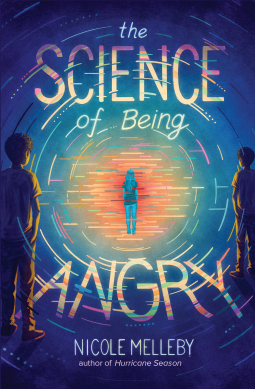The Science of Being Angry, by Nicole Melleby
(Algonquin Young Readers)
Eleven-year-old Joey lives in an unusual blended family. For
one thing, she and her two twin brothers have two moms, one of whom was married
before and has a son from that marriage. She and her brothers were the result
of IVF, and the boys are identical, having split from the same egg. For all the
nontraditional nature of this family, there’s a lot of love and acceptance. But
all is not well with Joey. She’s been having increasingly volatile episodes of
anger and acting-out. Her temper has become legendary at school, where she’s been
given the nickname, “Bruiser,” after she threw a soccer ball at a boy in gym
class so hard she bruised his collarbone. She’s roughly pushed away her best
friend, on whom she also has a crush. Now she’s left with the fallout wreckage
of what she’s done.
Despite the efforts of her moms to help her, Joey’s
outbursts are only getting worse. Finally, she melts down into a tantrum so
destructive, her family is evicted from their apartment and must move into a
motel, where close quarters fuel everyone’s irritation. Her moms start
bickering, and Joey thinks that’s her fault. Her older brother, who is trying
to focus on his academics, goes to live with his father, and of course, Joey
blames herself for that, too.
Joey can’t understand why she flies into a rage or how to
control it. All her best intentions are in vain. Then she gets the idea that
perhaps her temper is a genetic trait inherited from her biological father. If
she can just track him down, she thinks, she might better understand her own
volatility—and he might have found successful strategies for managing his
anger. With the help of her alienated best friend/crush, she embarks on a
genetics project for science class. And, of course, nothing goes the way Joey
expects.
In many ways, Joey is a typical adolescent, struggling with
the tensions between immaturity and independence. In others, though, she is
very much her own person with a unique family. I loved the way the unusual
marriage and relationships are presented in a matter-of-fact way. Joey’s anger is
clearly not caused by her having two lesbian mothers. Indeed, the clear love
and understanding between her mothers, the way each of them has found her way
to an authentic life, are one of Joey’s principal strengths. I also noted very
little along the lines of, “girls don’t have anger management issues,” when in
fact psychological research shows that girls experience anger as frequently as
boys do (but are socialized to suppress it).
What I most loved about this book was the respect with which
Joey and her problems were portrayed. Joey is in many ways still a child, and
for all her competence in many areas, she has a child’s limited resources for
dealing with psychological issues that confound many adults. Her sense of
responsibility often leads her to shoulder disproportionate blame, to withdraw
rather than harm someone she loves, and to keep her pain to herself. She
confronts an issue all of us face, regardless of how old we are: when do we ask
for help, and when do we rely upon our own resources? In the end, Joey realizes
that she cannot master her temper by herself, and—more importantly—that there
is kindness, understanding, and help available to her.
Highly recommended for adults as well as their adolescent
children.


